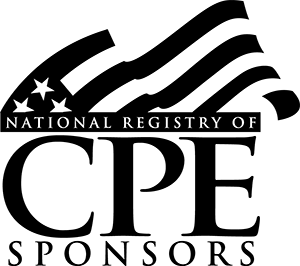What Sponsors Need to Know
MY COMPANY OFFERS CONTINUING EDUCATION FOR SEVERAL PROFESSIONAL CREDENTIALS, INCLUDING THE CERTIFIED PUBLIC ACCOUNTANT(CPA) DESIGNATION. DO I HAVE DIFFERENT COMPLIANCE RESPONSIBILITIES?
While the Standards are the framework for continuing education programs for CPAs, they do not prohibit sponsors from offering programs to a variety of other professions. NASBA recognizes that many CPAs hold multiple professional designations/credentials. Some of the more common credentials include: Certified Financial Planner, Certified Internal Auditor, Enrolled Agents, human resource professional certifications, life insurance agents, brokers and dealers.
When it comes to NASBA’s compliance responsibilities and working with multiple professions, there are two key areas that often result in compliance deficiencies.
The first area is course descriptive information (promotional material). Does a CPA know which programs qualify for NASBA-approved CPE credits? Is it easy for the CPA or other professional to find this type of information in the course promotional material? A sponsor should clearly state in course promotional material which programs and program delivery methods are acceptable for NASBA-approved CPE credits and which programs are developed for other professions or credentials.
The second area that frequently results in non-compliance surrounds the measurement of CPE. If you are a licensed attorney, you are required to take Mandatory Continuing Legal Education (MCLE). Did you know that MCLEs are measured on a 60-minute hour and credits are rounded down to the nearest hundredth of an hour? If you are a human resource professional, your continuing education units (CEUs) are measured on a contact hour. So that means 1 CEU equals 10 contact hours of participation in an organized event.
What does this mean for NASBA-approved sponsors? It means that CPE credits for CPAs are calculated on a 50-minute hour and round down to the nearest whole or half-hour increment. If you are offering continuing education credits for multiple professional designations, make sure the calculated credit for each designation is correct and the information is clearly communicated to program participants.
A sponsor should also maintain the credit calculations for each professional designation with its program documentation for reference and support.

